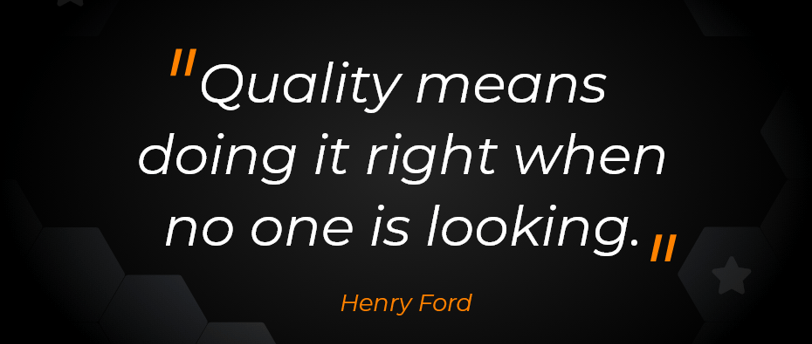IS 1309: Code of Practice for Painting of Concrete Surfaces
This is an Indian Standard that provides guidelines for the preparation and application of paints on concrete surfaces.
PAINTING


Introduction to IS 1309
IS 1309: Code of Practice for Painting of Concrete Surfaces is an Indian Standard that provides guidelines for the preparation and application of paints on concrete surfaces. Here’s a summary of the important details it covers:
1. Scope
IS 1309 lays down the procedure and best practices for painting concrete surfaces to protect them from weathering, chemicals, and other environmental factors, as well as to enhance their aesthetic appeal.
2. Surface Preparation
One of the key aspects of painting concrete is surface preparation. The standard emphasizes the following steps:
Cleaning: The surface must be free from dust, dirt, grease, and oil. This can be done using water, detergents, or other cleaning agents.
Repairing Defects: Any cracks, voids, or surface imperfections should be repaired using appropriate materials like cement mortars or fillers.
Curing Period: Concrete must be allowed to cure adequately (typically 28 days) to ensure proper bonding of paint.
3. Types of Paints
The standard specifies various types of paints that can be used depending on the environmental conditions and the purpose of the application:
Cement-based Paints: These are breathable paints allowing moisture to escape, often used in exterior applications.
Acrylic Paints: Provide good flexibility and durability, especially suited for areas subject to high moisture or varying temperatures.
Epoxy Paints: Provide superior chemical resistance and are often used in industrial settings or areas prone to spills.
4. Application Methods
The standard outlines several methods for applying paint, including:
Brush Application: Most common for small areas or detailed work.
Roller Application: Suitable for large surfaces, providing an even finish.
Spray Application: Fast and efficient, particularly useful for large, unbroken surfaces. Special attention is needed to avoid overspray.
5. Coating System
It recommends a multi-coat system for better durability, typically:
Primer Coat: A primer ensures good adhesion of the paint and can seal porous surfaces.
Intermediate Coat: Provides additional build-up and helps enhance the overall performance of the paint system.
Finish Coat: The top coat gives the final appearance and additional protection from environmental factors.
6. Environmental Conditions
The standard emphasizes that painting should be done under suitable environmental conditions. Humidity and temperature play a critical role in curing and bonding, so painting should not be done in extreme heat or when rain is expected.
7. Maintenance and Repainting
Periodic inspection and maintenance of painted surfaces are essential. The standard also provides guidelines for repainting, including surface preparation and application of fresh coats.
8. Concrete Surface Conditions
The standard further defines the conditions that must be addressed before applying paint:
Moisture Content: Concrete should be allowed to dry to an acceptable level. Painting over wet or damp surfaces can result in poor adhesion and blistering.
Efflorescence: A white, powdery deposit of salts that can appear on concrete surfaces. This should be removed by washing with dilute acid (e.g., 5% hydrochloric acid) followed by rinsing thoroughly with water.
Laitance: A weak, powdery layer on the surface of concrete that can occur due to excess water during casting. This layer should be removed by wire brushing, sanding, or light sandblasting to provide a sound surface for painting.
9. Recommended Primers for Concrete
Priming concrete surfaces is a crucial part of the process. IS 1309 recommends using specific types of primers depending on the surface condition and paint system:
Acrylic Primers: These primers provide excellent bonding to the substrate and are commonly used for exterior applications. They also resist alkali attacks from concrete.
Epoxy Primers: These are used when a high degree of chemical resistance is required, such as in industrial areas or in places where aggressive substances are expected.
Cementitious Primers: These are water-based and offer good adhesion to fresh concrete surfaces. They are ideal for use before applying cement-based paints.
10. Types of Defects in Painted Surfaces
The standard identifies common defects that may occur in painted concrete surfaces and provides guidelines to prevent or correct these issues:
Blistering: Caused by moisture trapped beneath the paint film, leading to bubbles. To avoid this, the concrete must be adequately dry before painting.
Peeling and Flaking: Can occur when the paint fails to adhere properly, often due to poor surface preparation or applying paint over a dirty or oily surface.
Chalking: A powdery residue that forms on the surface of the paint due to degradation from UV rays. This can be minimized by using high-quality, UV-resistant paints.
Cracking: Results from the application of paint that is too thick or from painting over a cracked surface. Using flexible paints, such as elastomeric coatings, can help reduce this risk.
11. Paint System Durability
The durability of the painting system is influenced by:
Number of Coats: Applying multiple layers (primer, intermediate, and top coat) ensures longer life.
Type of Paint Used: High-performance coatings, such as epoxy or polyurethane systems, offer superior durability but may require more precise application conditions.
Environmental Exposure: Surfaces exposed to harsh conditions (e.g., industrial pollution, marine environments, or high UV radiation) may need specialized coatings or more frequent maintenance.
12. Application Conditions
The standard provides detailed guidelines on the optimum conditions for painting:
Temperature: Ideal ambient temperature for applying most paints is between 10°C to 35°C. Below 10°C, paints may not dry or cure properly, and above 35°C, paints can dry too quickly, leading to issues like brush marks or roller stippling.
Relative Humidity: It is recommended to paint when the humidity is below 75%. High humidity can cause the paint to dry slowly, which may lead to defects like sagging or poor adhesion.
13. Tools and Equipment
IS 1309 also provides guidelines on the use of appropriate tools for each type of surface and paint:
Rollers and Brushes: These are commonly used tools for most painting jobs on concrete. Rollers can cover large areas quickly, while brushes are more suitable for edges and corners.
Airless Spray Equipment: This is recommended for large surface areas and to ensure even application of paint without leaving brush marks or roller textures.
High-Pressure Water Jet: Can be used for surface preparation, especially for removing loose materials and cleaning the concrete surface effectively.
14. Testing and Inspection
To ensure the quality of the painting system, IS 1309 emphasizes the importance of testing and inspections:
Adhesion Tests: After the paint has dried, adhesion testing (such as pull-off tests) may be conducted to ensure that the paint has bonded well to the surface.
Thickness Measurement: For protective coatings, ensuring the right film thickness is crucial for durability. This can be measured using a dry film thickness (DFT) gauge.
Visual Inspection: The painted surface should be checked for uniformity, coverage, and defects like pinholes, sagging, or uneven texture.
15. Maintenance and Cleaning
The standard provides recommendations for cleaning and maintaining painted concrete surfaces to extend their life:
Regular Cleaning: Removing dirt, dust, and environmental contaminants through periodic washing with mild detergents and water is necessary to maintain the appearance and protective properties of the paint.
Touch-Up and Recoating: Damaged or deteriorating areas should be touched up promptly to prevent further deterioration of the underlying concrete. Recoating intervals depend on the environment, with harsher conditions requiring more frequent maintenance.
16. Painting in Special Conditions
The standard addresses special environments that may require specific types of paint systems:
Marine Environments: For concrete structures in marine conditions, specialized coatings like epoxy or coal-tar epoxy systems are recommended for protection against saltwater.
Chemical Exposure: In areas exposed to chemicals, such as chemical plants or industrial zones, acid- and alkali-resistant coatings, such as epoxy and polyurethane, are advised.
High-Temperature Environments: For surfaces exposed to high temperatures, heat-resistant paints that can withstand the thermal stresses should be used.
17. Health and Safety
It recommends safety precautions for workers, including wearing protective gear and ensuring proper ventilation, especially when using solvent-based paints.
By following these detailed guidelines in IS 1309, the painting of concrete surfaces can be optimized to achieve long-lasting protection and a high-quality finish, especially in challenging environmental conditions.
